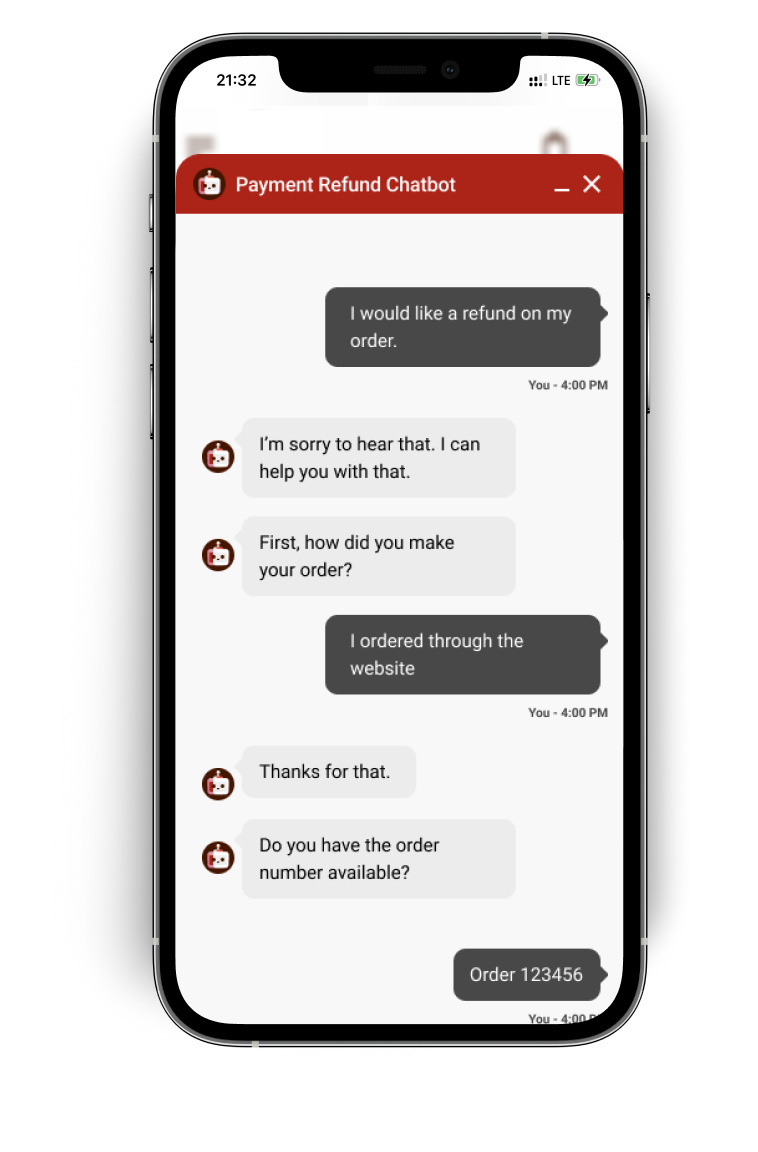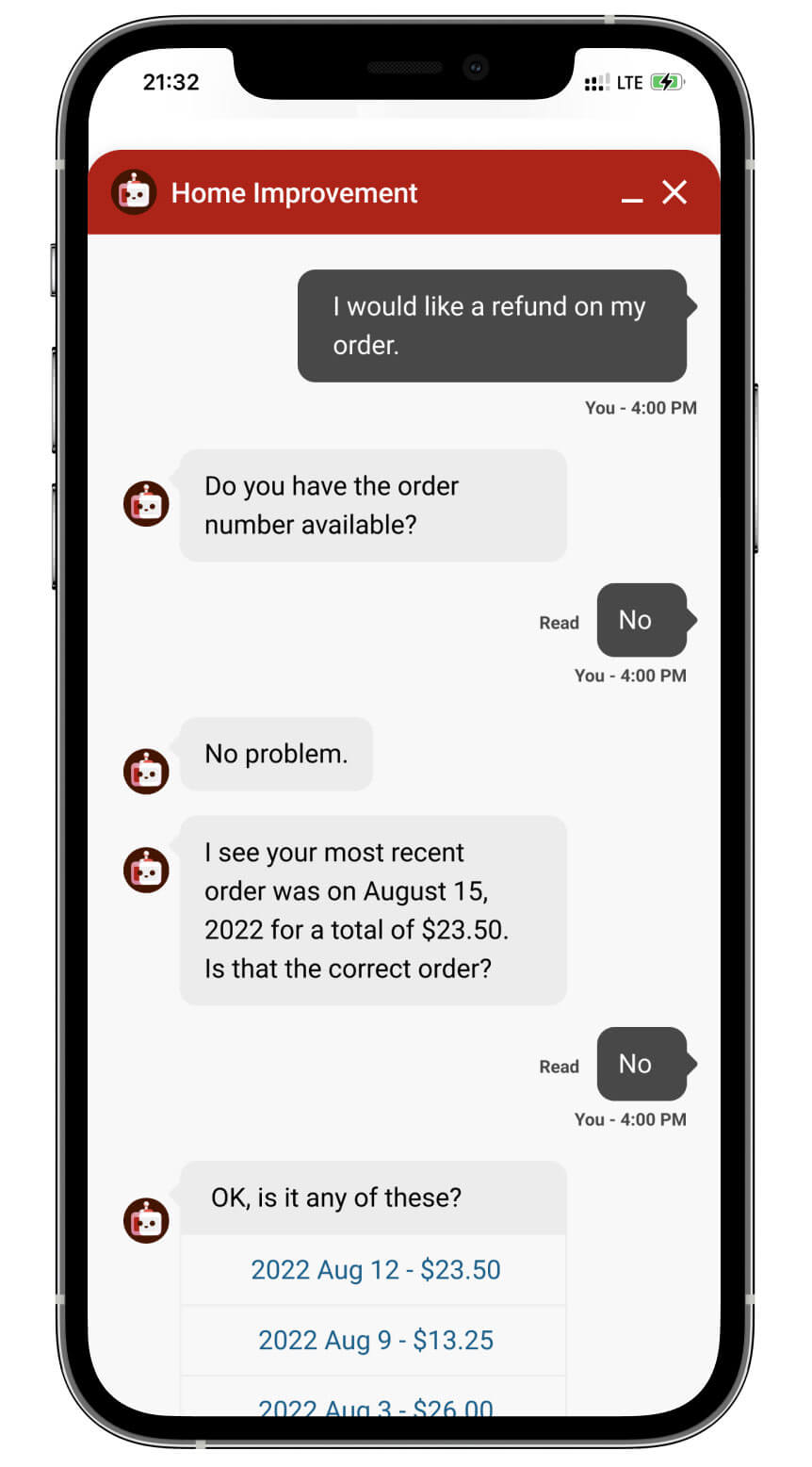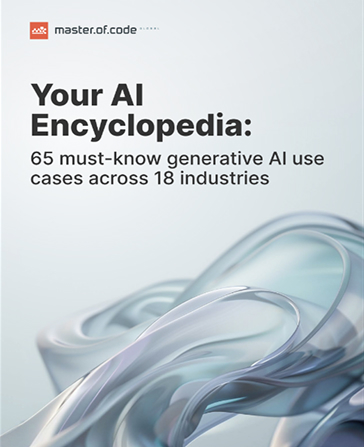Effective Use of Chat Automation to Process Order Refunds
A national food-services organization in North America that focuses on “Fast-Casual” Mexican dining is undergoing a digital transformation as to how they engage with their customers over multiple engagement channels. One of their transformation initiatives involves the use of Conversational AI to permit several different self-service options to their customer base.

Challenge
The ability to effectively process the volume of refund requests made by customers to live agents via traditional channels poses an operational challenge to the brand. Foremost among these is the high cost of staffing human agents in a 24/7 contact center. It is also a user experience problem as, at times, customers must wait for a live agent in order to request a refund while they are already upset, thus causing more frustration with the brand. The implementation of an automated solution is intended to reduce operational costs & customer wait times for refund processing, provide centralization of business logic (to more effectively handle updates to the process), and minimize the risk of human error when processing refunds.
An additional challenge that impacts the brand for refunds is when users purchase their meal via 3rd-party order and delivery services. In such cases, refunds are not to be provided by the brand but rather by the 3rd-party and that information needed to be effectively relayed to the customer.
What was created
Payment Refund Chatbot
The brand has an operational Conversational AI solution already in place. The solution has been extended to support the refund process flows. To better service the customer, the process requires some clarification from the user in order to better understand the scenario in which the refund may be processed:

- How the order was purchased - Was it purchased in-store, through their mobile app, on the website, or through a 3rd-party service.
- What was the issue with the order - Situations such as the delivery did not arrive, there was something missing or wrong with the order, poor quality of food helped to provide the feedback to the brand.
- How was the initial payment performed - This can impact the refund amount, as a full-price payment would have a different refund value than one paid with points or through a coupon.
These are some of the key factors driving the business logic under whether the brand will provide a refund to the customer as well as how much of a refund they will receive. As the combinations of criteria are quite complex and engagement volumes with the brand were high, an elevated risk of human error existed to provide a refund under the correct scenario. The Payment Refund Chatbot is able to utilize this logic effectively and scale as demand needs, as well as being responsive to changes when promotions or other criteria prompt a new update.


For orders generated through a 3rd-party service, the Payment Refund Chatbot is able to immediately provide the user with information that they need to engage with that external service directly to process their refund. The removal of wait times to a live agent allowed the customer to be informed earlier in the engagement of who to contact to process their refund.
Team structure
To build the Payment Refund Chatbot, Master of Code Global provided a multi-disciplinary team to expand on the primary bot solution, providing end-to-end build and support for the service. These roles include:
- Solution Delivery Manager
- Project Manager
- Quality Assurance Team
- Conversation Designer
- Lead Developer
- Bot Development Team (Back-end, Front-end, User Interface and Experience)
Results
By providing the Conversational AI solution to handle refunds, the following results and benefits were arrived at:
42% - 66%
Agent escalation for refund requests dropped between 42% and 66%, depending on the channel and time frame
$10.2M
Refund cost savings through improved refund process flow
Refund cost savings through improved refund process flow
13% - 28%
Total amount of refunds provided dropped between 13% and 28%, depending on the channel and time frame, due to consistent and clarity on the rules governing refunds

In addition to the quantifiable results identified above, some additional results were also recognized:
- The process in which refunds are consistently applied and approved has been significantly improved and standardized by creating clear business logic driving the decision
- Reduction in the human error element of the refund process as the bot can instantly identify and apply the right scenario
- Efficiency in applying new rules and guidance around the refund process which can be instantly available and consistently applied once published within the Payment Refund Chatbot
- Operating costs are reduced as the number of escalations to live agents dropped, allowing agents to focus on more important questions and concerns
- Wait times for users to speak to a live agent are reduced



All of these success criteria combined are projected to equate to an improved customer satisfaction score over time. With this success and continual review and adaptation, additional refinements continue to occur and expansion of this process to other channels will also be forthcoming, allowing users the ability to self-serve for their refund requests over a number of available channels for their convenience.


